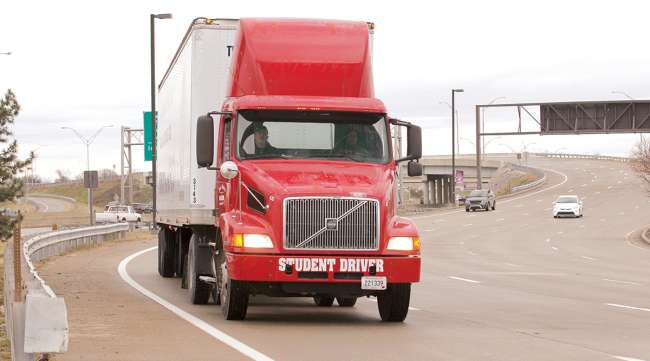Senior Reporter
FMCSA Electronic IT System Glitch Expected to Delay Portion of Driver Training Rule

[Stay on top of transportation news: Get TTNews in your inbox.]
A Federal Motor Carrier Safety Administration electronic information system glitch is delaying full implementation of the Entry Level Driver Training rule, an agency spokesman confirmed.
FMCSA is working on a temporary fix to solve the system glitch that is expected to delay a requirement that electronic information system transfers permit secure communication among driver training schools, state licensing agencies and FMCSA.
Transfers to FMCSA from the schools are needed to validate that new drivers successfully have completed their classroom and driving skills requirements. FMCSA is then required to forward the information electronically to states so drivers won’t face delays in obtaining their commercial driver licenses.
“While FMCSA continues implementing the entry-level training rule, the agency is working closely with its state partners to ensure there will be secure, efficient, and seamless communication between the self-certified training providers and state driver licensing agencies,” an FMCSA spokesman said in a June 20 statement provided to Transport Topics. “FMCSA anticipates seeking an extension of some provisions of the ELDT [entry-level driver training] rule in order to gather additional feedback from the states and make the implementation as effective as possible.”

A student trains behind the wheel with his instructor. (Roadmaster Drivers School)
A reason for the electronic information system glitch was not detailed. Meanwhile, the agency is attempting to find a temporary workaround that could be detailed in an agency notice next month, according to the administration’s spring 2019 Unified Agenda of Regulatory and Deregulatory Actions.
Training providers must, at a minimum, provide instruction in a training curriculum that meets all the standards established in the training rule and must also meet other eligibility requirements in order to be listed on FMCSA’s Training Provider Registry. Training providers must also attest that they meet the specified requirements, and in the event of an FMCSA audit or investigation of the provider, must supply documentation to verify their compliance.

Horvath
“The last update we got from FMCSA was that it’s by no means going to be an all-out, total delay of the ELDT rule,” said Dan Horvath, director of safety policy for American Trucking Associations. “What they told us was the delays will be related to the IT functions of the system. There still will be a verification process — the driver won’t be able to walk in and say, ‘Yeah, I did it.’ The state driver license agencies will likely verify it in some way, whether it’s with paper documents or some other method that the curriculum was completed. It’s just the automated part of the process that’s going to be delayed.”
“We appreciate that the FMCSA is moving ahead with this rule,” said Don Lefeve, president of the Commercial Vehicle Training Association. “We understand that there are challenges they and their state partners are currently facing. But we believe that there are reasonable alternatives that would allow the FMCSA to complete this action before Feb. 7, 2020.”
The rule, which carries a compliance date of Feb. 7, 2020, sets no minimum number of hours of classroom instruction or driving skills training.

Lefeve
The 2016 Entry Level Driver Training rule, largely the result of recommendations sent to the agency by a committee of industry stakeholders, revised the standards required for new interstate and intrastate commercial vehicle operators to obtain a Class A and Class B commercial driver license.
The behind-the-wheel curricula for a Class A and Class B commercial drivers license, composed of range and public road segments, include discrete maneuvers that each driver-trainee must proficiently demonstrate to the satisfaction of the training instructor. The rule dictates that the training provider must not issue the training certificate unless the driver-trainee demonstrates proficiency in performing all required behind-the-wheel skills.
Originally, FMCSA said it believed the three-year phase-in period would allow ample time for the commercial motor vehicle driver training industry to develop and begin offering training programs that meet the requirements for listing on the Training Provider Registry.
“Unlike FMCSA’s phased approach to the Medical Certification and National Medical Registry implementation, the agency will not provide the licensing agencies with paper training certificates, nor will licensing agencies be permitted to accept paper certificates as evidence of ELDT compliance,” the rule said.




